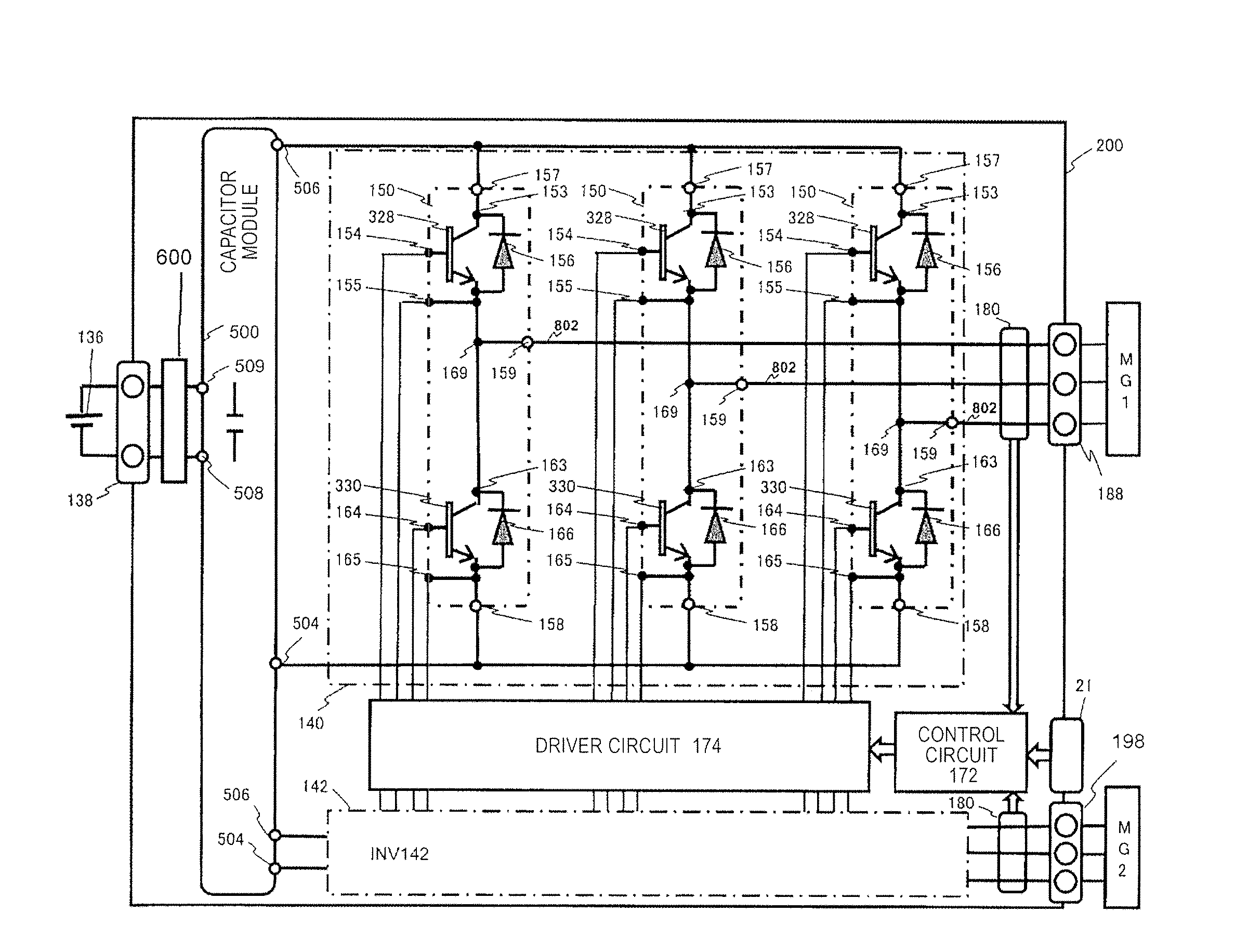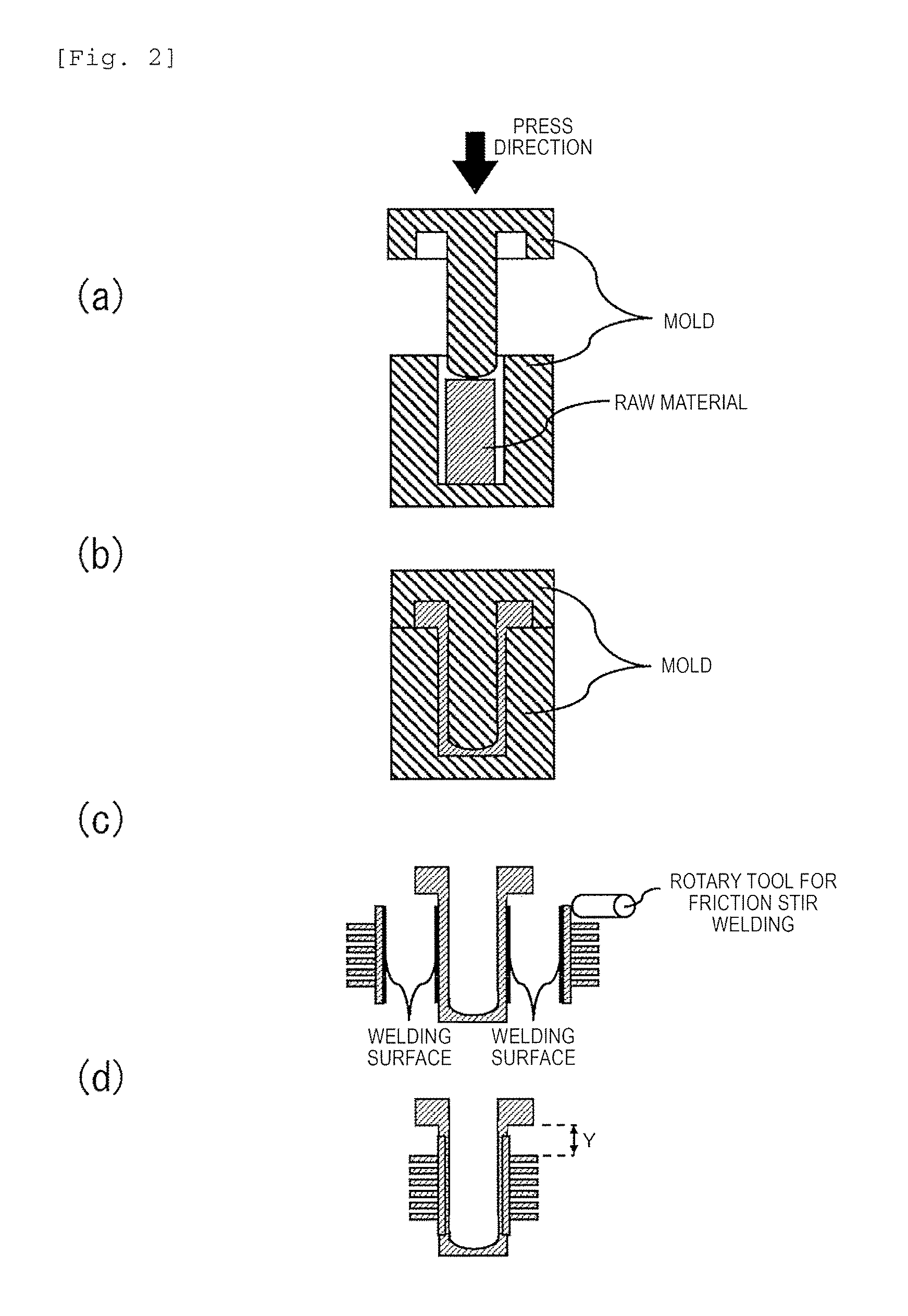Power converter
- Summary
- Abstract
- Description
- Claims
- Application Information
AI Technical Summary
Benefits of technology
Problems solved by technology
Method used
Image
Examples
first example
[0029]FIG. 3 is a diagram illustrating a control block of a hybrid electric vehicle (hereinafter, described as “HEV”). An engine EGN, a motor generator MG1, and a motor generator MG2 generate a driving torque of the vehicle. Furthermore, the motor generator MG1 and the motor generator MG2 not only generate a rotary torque but also have a function for converting a mechanical energy applied from the outside to the motor generator MG1 or the motor generator MG2 into electric power.
[0030]For example, the motor generators MG1 and MG2 are synchronous motors or induction motors and, as described above, operate as motors or generators depending on an operating method. If the motor generators MG1 and MG2 are mounted on the vehicle, it is desired to obtain a high output despite a small size and a permanent magnet-type synchronous motor using a magnet such as neodymium is suitable for the motor generators MG1 and MG2. Furthermore, the permanent magnet-type synchronous motor generates less heat...
second example
[0102]A schematic configuration of a power converter 200 of a second example will be described with reference to FIGS. 10 and 11. FIG. 10 illustrates a modification example in which the flow path forming member 2 of the first example is changed to a first flow path forming member 2a and a second flow path forming member 2b. Since the other configurations are the same as the configurations of the first example, detailed description will be omitted.
[0103]The first flow path forming member 2a is mounted on a power semiconductor module 150a from the same direction as a refrigerant traveling direction similar to when the flow path forming member 2 is mounted on the power semiconductor module 150a in the first example. Here, in the first example, the flow path forming member 2 is mounted so as to hold all of three power semiconductor modules 150a, but in this embodiment, two adjacent power semiconductor modules 150a among three power semiconductor modules 150a are mounted on the first flo...
third example
[0111]A schematic configuration of a power converter 200 of a third example will be described with reference to FIG. 12.
[0112]FIG. 12 illustrates a modification example in which three power semiconductor modules 150a are respectively housed in different module housing spaces 20a.
[0113]In this embodiment, three module housing spaces 20a are formed in a casing 20. The three module housing spaces 20a are connected in series and form a refrigerant flow path from an inlet pipe 30a to an outlet pipe 30b. The first example and the second example are different from this example in that the three power semiconductor modules 150a are housed in one module housing space 20a.
[0114]Similar to the first example and the second example, the power semiconductor module 150a is housed in the module housing space 20a in a state where a flow path forming member 2c is mounted. In this embodiment, the flow path forming member 2c is mounted on each of the three power semiconductor modules 150a.
[0115]In t...
PUM
 Login to View More
Login to View More Abstract
Description
Claims
Application Information
 Login to View More
Login to View More - R&D
- Intellectual Property
- Life Sciences
- Materials
- Tech Scout
- Unparalleled Data Quality
- Higher Quality Content
- 60% Fewer Hallucinations
Browse by: Latest US Patents, China's latest patents, Technical Efficacy Thesaurus, Application Domain, Technology Topic, Popular Technical Reports.
© 2025 PatSnap. All rights reserved.Legal|Privacy policy|Modern Slavery Act Transparency Statement|Sitemap|About US| Contact US: help@patsnap.com



